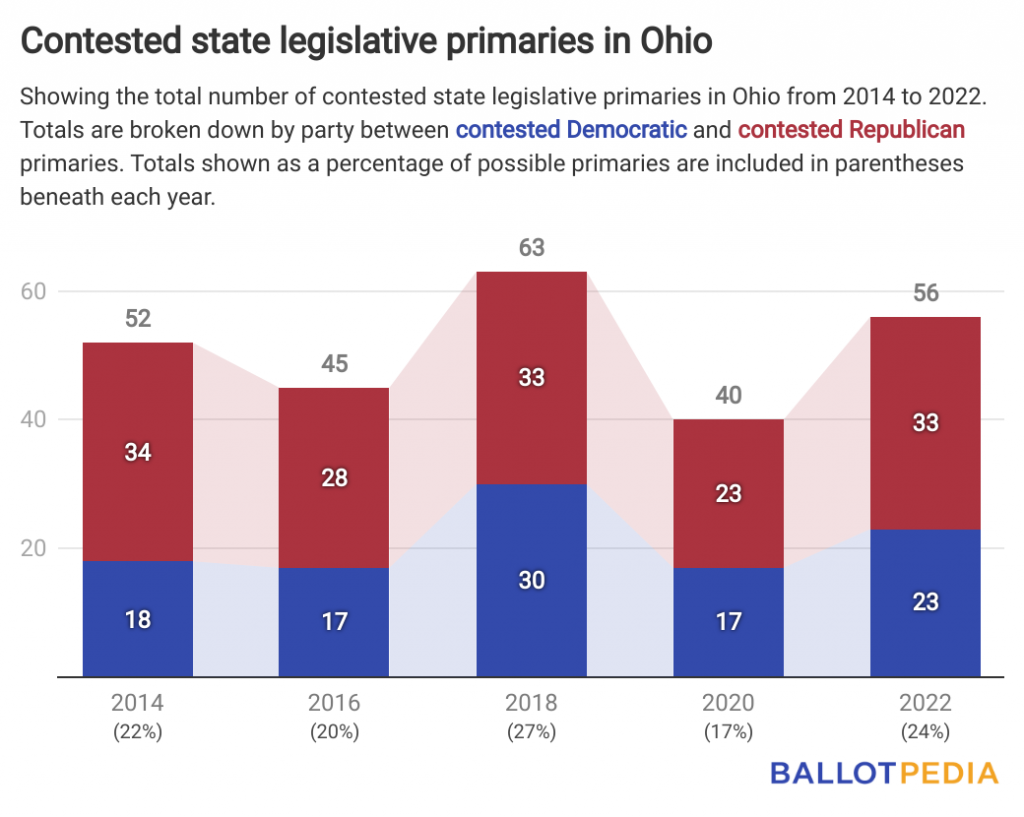Ohio has 56 contested state legislative primaries this year, 24% of the total number of possible primaries, and 40% more that the 40 contested primaries in 2020.
A primary is contested when more candidates file to run than there are nominations available, meaning at least one candidate must lose.
Of the 56 contested primaries, there are 23 for Democrats and 33 for Republicans. For Democrats, this is up from 17 in 2020, a 35% increase. For Republicans, the number increased 43% from 23 in 2020.

Twenty-six primaries feature an incumbent: eight Democrats and 18 Republicans. This represents 30% of all incumbents who filed for re-election, the highest rate of incumbents in contested primaries compared of the preceding five election cycles.
Overall, 261 major party candidates—120 Democrats and 141 Republicans—filed to run. All of the state’s 99 House districts and 17 of the 33 Senate districts are holding elections this year.
Thirty-one of those districts are open, guaranteeing that at least 23% of the state legislature will be represented by newcomers next year.
Ohio has had a Republican trifecta since 2010 when the party won control of the governorship and state House. Republicans currently hold a 25-8 majority in the Senate and a 64-35 majority in the House.
Ohio’s state legislative primaries are scheduled for August 2, the 11th statewide primary date of the 2022 state legislative election cycle, and the state’s second statewide primary this year. Voters previously decided state executive and congressional primaries on May 3, with state legislative primaries delayed due to litigation regarding redistricting.
Additional reading:
Ohio State Senate elections, 2022
Ohio House of Representatives elections, 2022
Learn More






